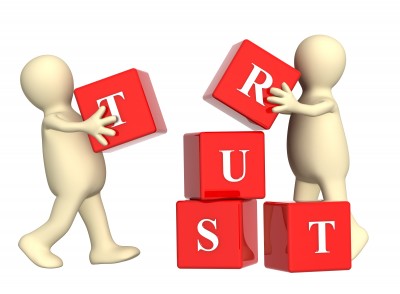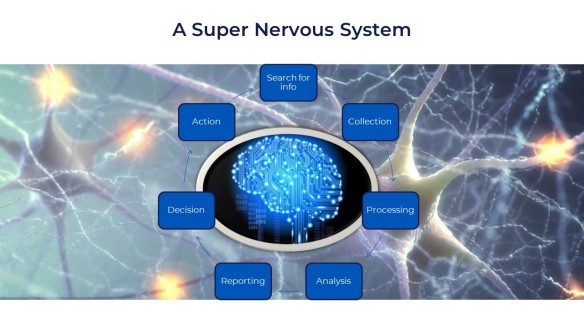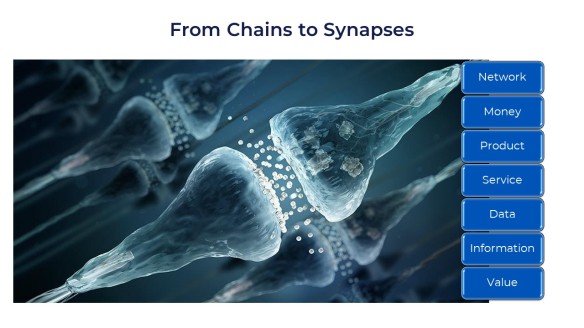I recently realized that in the almost 10 years that I have been active with the topic of the future of food, one question has never been asked. I never brought it up, either -until now. Yet it is an important one, especially in a time where food start-ups are popping up like we were living in the dotcom era all over again, presenting all sorts of new foods with huge investments to back them up. The question is: what is food?
The question may sound simple, but the answer might not be as obvious as you might think. Food covers many dimensions, the importance of which varies greatly, depending on whom you are asking. The most essential dimension of food is nutrition. Living organisms need nutrients to live. Without food, they die. Food is what provides the nutrients. It sounds obvious, doesn’t it? Considering the high percentage of overweight people, nutrition clearly is not a discipline that many really master. One of the reasons for this health disaster lies in the psychological dimension of food. Let’s face it, how many of you ever build a meal solely on good rational nutritional logic? No, we eat what we like and we do not eat what we do not like. The reasons for our taste preferences are plenty. They have to do with the way our parents have taught us about food, with cultural preferences, with experiences in early life, with religious beliefs and with all sorts of beliefs that have nothing to do with religion just as well. We all have our own particular systems of reference when it comes to food.
To illustrate my point, here are a few anecdotes. Being French from birth, I will start with frogs and snails. As most people know, the French have a reputation for their cuisine, although some ingredients have shocked some of their neighbours for ages. Snails and frogs legs are among the typical clichés of French food, to the great disgust of the Brits who, besides snails and frogs, are not too keen on rabbit and, even more shocking, on horse meat. In turn, the French have quite the low appreciation about typical British cuisine. Tastes differ. If snails have been a disgusting thought, they seem to turn into a desirable delicacy as soon as they are served as “escargots” (the French translation of “snails”). Yes, food is a lot about psychology. Another example of the psychological aspect of food that has always baffled me is why vegetarian products have to mimic meat. It sounds contradictory, but that is the way it is.
When I moved to the Netherlands, where I spent 13 wonderful years, one of my first visits to a grocery store included buying eggs. It might sound like the simplest thing in the world. Think again! I walked around and around in the store looking for eggs and I could not see any. I finally spotted someone from the store and asked if they had eggs. He pointed right behind me and said: there they are! I turned around and it took me a couple of seconds to finally see them, and there they were indeed: an entire stack about as tall as I am. I passed by the stack of eggs several time during my search and did not “see” them. There was a simple reason for that: the eggs were white and all I had seen in my life were brown eggs, although I knew about white eggs. My brain simply did not make the connection. All I could see was a huge stack of what I genuinely thought were ping-pong balls, because the packaging was also different from what I was used to.
When it comes to food, taste is important but many other physical qualities influence what we like or don’t like such as colours, smells, texture, how it feels when touching. Food is really something that involves our senses, except maybe for sound, which is more useful when hunting, I suppose. It is not just about number of calories, grams of protein or fat. It is how we experience it from the moment we see it and inspect it with our noses, mouths and hands.
Our senses, and how they have been trained, decide what we perceive as desirable or as repugnant. This part is not in the realm of rationality, yet it is not about being irrational, either. The irrational part is more in the domain of our system of reference and beliefs. For how irrational they may seem to those who do not share these beliefs, they are quite logical and true beliefs for those who adhere to them. In the always controversial conversation about food and agriculture, it is quite important to acknowledge these beliefs and accept that different people have different views about food. Without this acknowledgement, there cannot be much of a constructive conversation, which then always evolves into a fight.
 The question “What is food?” is only part of the equation when looking forward. The other –often neglected- question is: Do people know what food is? The answer to this one is really simple: it is a resounding NO!!! I can see that every day around me, and it is appalling. With urbanization comes the detachment from agriculture and Nature. Often what is left is some vague recollection or stories from previous generations that have been gradually altered and turn into beliefs of all sorts. The result is a lot of misconceptions, prejudices and dogmas, and this on all sides regardless of people are pro this or anti that. Every tribe now has its own mythology when it comes to food and agriculture, picking half-truths and only the facts that conveniently support those half-truths. Nonetheless and regardless of what beliefs they follow, most people have only a skewed knowledge of food at best, and most have none whatsoever. One of a side effects is the old adage that in the land of the blind, the one-eyed is king. Problem is that the one-eyed is not always ruling with integrity and truth in mind but more from a power and money point of view.
The question “What is food?” is only part of the equation when looking forward. The other –often neglected- question is: Do people know what food is? The answer to this one is really simple: it is a resounding NO!!! I can see that every day around me, and it is appalling. With urbanization comes the detachment from agriculture and Nature. Often what is left is some vague recollection or stories from previous generations that have been gradually altered and turn into beliefs of all sorts. The result is a lot of misconceptions, prejudices and dogmas, and this on all sides regardless of people are pro this or anti that. Every tribe now has its own mythology when it comes to food and agriculture, picking half-truths and only the facts that conveniently support those half-truths. Nonetheless and regardless of what beliefs they follow, most people have only a skewed knowledge of food at best, and most have none whatsoever. One of a side effects is the old adage that in the land of the blind, the one-eyed is king. Problem is that the one-eyed is not always ruling with integrity and truth in mind but more from a power and money point of view.
With all these points in mind, the question that needs to come next is what will food be about in the future? What will be the future beliefs, because they will play at least as important a role to define future foods as rational nutrition will? In fact, I believe that the psychology of food will largely prevail over rationality in what will be on our plates in the future, just like today. There are currently many popular topics.
One of them is insects. Insects are common foods in Asia and Africa, the two continents with the largest population growth for the future, unlike Western countries where insects are not really part of the food culture. So, is it a good idea to try to push insects into westerners’ mouths or would it be better to focus on markets where insects have a much more positive image? Insects remind me of the snails story. Originally, the French were not eating snails because it was fancy. Snails were a seasonal source of protein in times when protein was not abundant. The French simply used their cooking skills to make something rather unappealing to a delicacy. Another food that can be used as an example about insects is lobster. Lobster was not always a delicacy, on the contrary. Times change and so did the lobster’s image. If you like lobster and feel repulsed by insects, just think about what a lobster really looks like: a giant insect!
Another popular topic is plant-based protein. In my opinion, that is really not a novelty in the sense that people used to not eat that much meat and most of their protein used to come from plants: beans, peas, lentils and the entire family of legumes have always been a great source of protein. Also, textured soy burgers have been around for decades. In the future will such products made from these ingredients but processed and transformed into meat-like products really take over meat? I do not have the answer. Just with any new trend, the question is what will be short term and what will be long term. In times when processed industrial products have a poor image and are blamed for a number of nutrition-related health issues, one contradiction that I see, but food consumers are full of contradictions, is whether processed industrial products will be an appealing solution for the future.
Speaking of processed foods, a number of food start-ups that claim to re-invent food, are working on developing foods that sound more like synthetic foods. Perhaps some science-fiction writers from the 1950s and 60s had an amazing sense of foresight, or perhaps they are just a source of inspiration for producers who want to bring new products on the market. How will these foods of the future compare with our current system of reference? It is difficult to say. While currently, consumers long for authentic and natural, how do manufactured and synthetic answer their desire? And how will consumers’ desires evolve in a couple of decades from now? I have my views on it. The future will tell.
Another currently popular topic regarding the future of food is lab meat or clean meat or incubator meat. Although the claims that such products will be competitive with meat coming from an animal that has been slaughtered, the dollar numbers still are quite far from being so. When I wrote Future Harvests, the Dutch company that was at the front end of lab meat claimed it would be competitive and on the market in five years. That has clearly not materialized, yet. The same thing is true about the price at point of sale for incubator blue fin tuna flesh, which a start-up is developing. But maybe those products are only aimed at the 1% richest people. Regardless of those considerations, the big issue with these innovative protein products is the name. There is already a growing debate about the names “meat” and “milk”. Of course, it is convenient to use those names because it creates enough a confusion to lure meat and dairy eaters to alternative products. Of course, the producers of the “real thing” will argue that the alternative products are not meat or milk. After all, soy or almonds do not indeed have udders and nipples… Here, too, similar question as “What is food?” need to be asked: What is meat? What is milk? In an environment where most people could not answer what food is, it is easy to imagine the confusion between traditional century old ways of looking at food and new concepts. Let’s face it, the debate will not be over any time soon and many clashes are on the way, not so much because the outcome is complicated to reach. It will be difficult because, both sides will want to win the debate instead of looking at it as just more alternatives in the market. All sides of the debates will want to win because they will be so afraid that losing the debate could mean their end as food businesses. That is the price to pay when truth matters less than perception.
However, it is also important to not forget that unlike food innovation, human physiology, human metabolism and human biochemistry have barely changed over the past few dozens of thousands of years. The needs for nutrients and the mechanics of food inside the body will still have to meet the same physical specific requirements. Food is a unique connector between humans and Nature, even though many seem to have lost the awareness of this connection, often to their detriment. Like it or not, we come from Nature and Nature rules over us. The foods of the future must not ignore our biological nature if they want to be beneficial. They must not ignore all the psychological, culture and social roles that food fulfils and are a source of happiness and mental health as well.
Copyright 2018 – Christophe Pelletier – The Happy Future Group Consulting Ltd.
 It is no secret that trust is eroding in many areas. It happens with politics, with traditional media and even with some social media outlets, and it happens with food producers, especially the larger companies. One of the challenges that many food and agriculture organizations have been facing for decades is the loss of trust from consumers. The reasons why are many. Some are justified and some are not. Regardless of that, the loss of trust is a challenge that is becoming more and more difficult to overcome. In my career, I have had to deal with this problem in many occasions, but I always found ways of breaking the vicious circle of mistrust. In my opinion, the difficulty for organizations is not so much that people distrust some food producers, as it is to find the right way of addressing the issue and of truly creating a connection for a further conversation. PR does not work all that much anymore, simply because about everyone knows how it sounds and spot the communication exercise in action, which further erodes trust. Also, the timing is too often wrong and it makes the connection much more difficult. As a practitioner of martial arts for many years, I also see attempts to regain trust much more as an exercise in strength as one in flexibility and agility, and that is usually a losing tactic.
It is no secret that trust is eroding in many areas. It happens with politics, with traditional media and even with some social media outlets, and it happens with food producers, especially the larger companies. One of the challenges that many food and agriculture organizations have been facing for decades is the loss of trust from consumers. The reasons why are many. Some are justified and some are not. Regardless of that, the loss of trust is a challenge that is becoming more and more difficult to overcome. In my career, I have had to deal with this problem in many occasions, but I always found ways of breaking the vicious circle of mistrust. In my opinion, the difficulty for organizations is not so much that people distrust some food producers, as it is to find the right way of addressing the issue and of truly creating a connection for a further conversation. PR does not work all that much anymore, simply because about everyone knows how it sounds and spot the communication exercise in action, which further erodes trust. Also, the timing is too often wrong and it makes the connection much more difficult. As a practitioner of martial arts for many years, I also see attempts to regain trust much more as an exercise in strength as one in flexibility and agility, and that is usually a losing tactic. From what I have seen during my professional life, I believe that this is the kind of service that most organizations need. The number of strategic errors or implementation planning missteps that happen every day is there to prove that getting a second opinion is not a luxury, but in fact can prevent many costly mistakes.
From what I have seen during my professional life, I believe that this is the kind of service that most organizations need. The number of strategic errors or implementation planning missteps that happen every day is there to prove that getting a second opinion is not a luxury, but in fact can prevent many costly mistakes.








